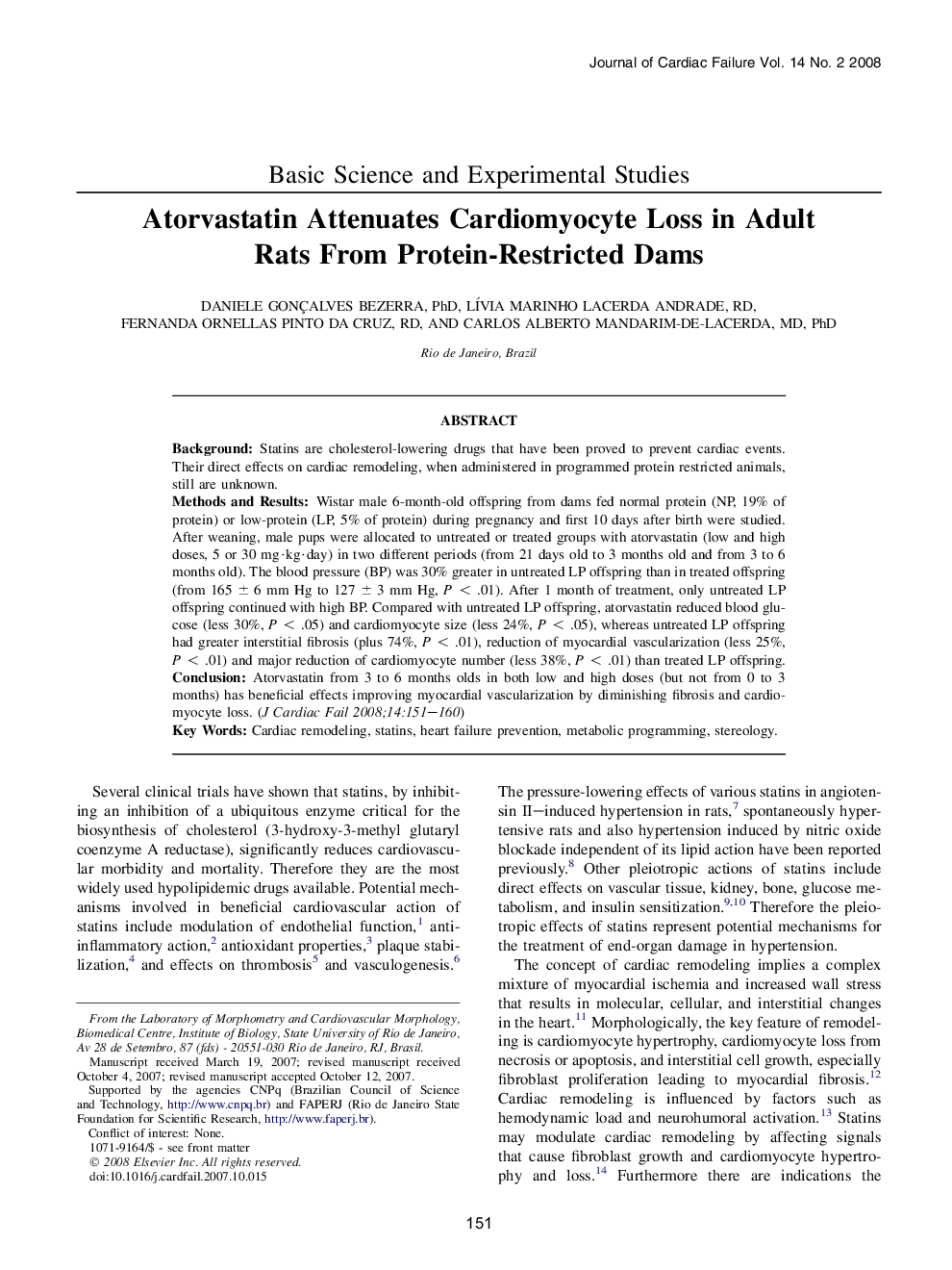| Article ID | Journal | Published Year | Pages | File Type |
|---|---|---|---|---|
| 2962286 | Journal of Cardiac Failure | 2008 | 10 Pages |
BackgroundStatins are cholesterol-lowering drugs that have been proved to prevent cardiac events. Their direct effects on cardiac remodeling, when administered in programmed protein restricted animals, still are unknown.Methods and ResultsWistar male 6-month-old offspring from dams fed normal protein (NP, 19% of protein) or low-protein (LP, 5% of protein) during pregnancy and first 10 days after birth were studied. After weaning, male pups were allocated to untreated or treated groups with atorvastatin (low and high doses, 5 or 30 mg·kg·day) in two different periods (from 21 days old to 3 months old and from 3 to 6 months old). The blood pressure (BP) was 30% greater in untreated LP offspring than in treated offspring (from 165 ± 6 mm Hg to 127 ± 3 mm Hg, P < .01). After 1 month of treatment, only untreated LP offspring continued with high BP. Compared with untreated LP offspring, atorvastatin reduced blood glucose (less 30%, P < .05) and cardiomyocyte size (less 24%, P < .05), whereas untreated LP offspring had greater interstitial fibrosis (plus 74%, P < .01), reduction of myocardial vascularization (less 25%, P < .01) and major reduction of cardiomyocyte number (less 38%, P < .01) than treated LP offspring.ConclusionAtorvastatin from 3 to 6 months olds in both low and high doses (but not from 0 to 3 months) has beneficial effects improving myocardial vascularization by diminishing fibrosis and cardiomyocyte loss.
